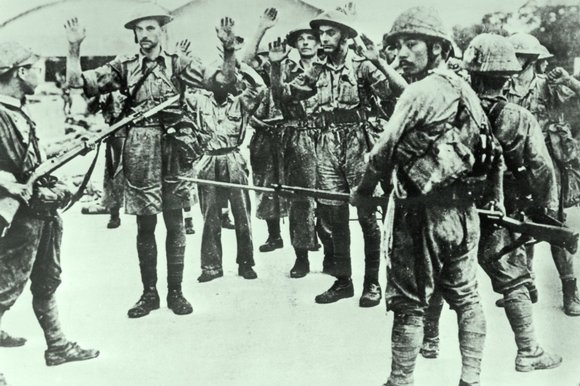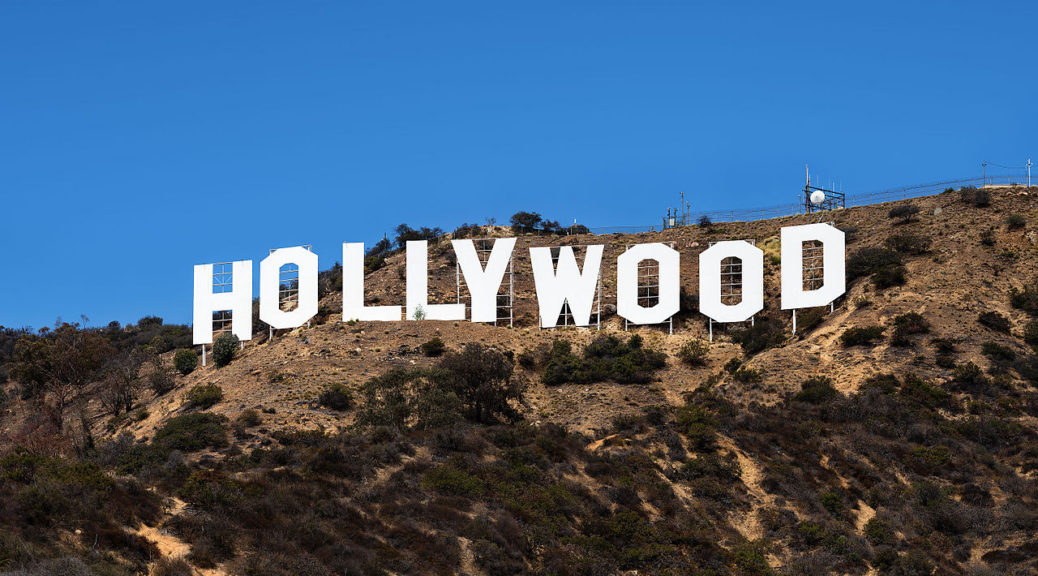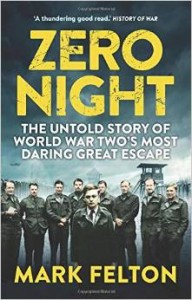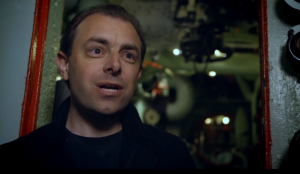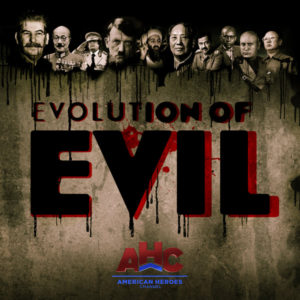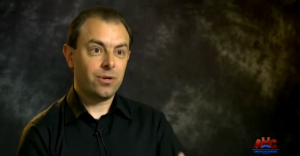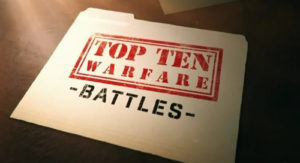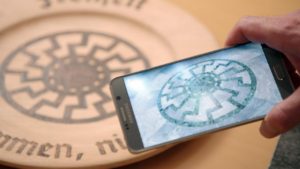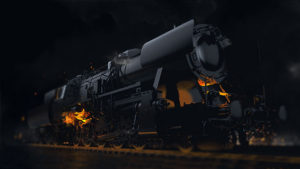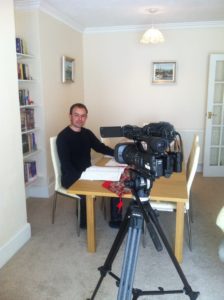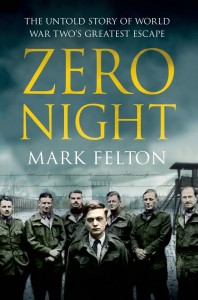Death March
1945’s Forgotten Tragedy
‘I moved with the rear party…Each morning all those POWs who were unable to travel were placed in groups…The disposal was done behind me, and I never knew who killed them.’
Lieutenant Watanabe, Sandakan-Ranau Death March, 1945
In Borneo the situation for thousands of Australian, British and Indian POWs had been steadily deteriorating ever since they had been shipped to the festering jungle-covered island of death in 1942 and 1943 to labour for the Japanese on illegal military projects. In one month at the camp at Kuala Belait fifty-five Indian prisoners had died of starvation. By July 1945 only a month of the war remained, but no help had yet reached the Borneo camps. At Kuala Belait the Japanese finished off most of the remaining Indian soldiers. ‘About 13th or 14 June, 1945, the Indians were ordered, to fall in and were then bayonetted or beheaded by the Japanese,’ recalled Naik Changdi Ram, who escaped the slaughter by hiding in some bushes. ‘I did not actually see the killing,’ recalled Ram, ‘but I heard the Indians crying; and in the morning I went in and saw that all of the Indians’ heads had been cut off.’ In total, sixty-five Indian prisoners had been murdered.
The Allies had the opportunity to save thousands of Australian, British and Indian POWs from a certain death at the hands of the Japanese – but they did not act and a huge number died as a result. In one of the greatest scandals of Second World War bureaucratic incompetence, national distrust and weak leadership allowed the Japanese to commit mass murder at the point of their nation’s surrender and immediately afterwards. The truth of this terrible crime, and the Allied operation that could have prevented it from occurring, has only begun to emerge in the last two decades. It was far from the Allies finest hour in the war in Asia, and a human tragedy of quite terrible proportions.
It was revealed to the Australian and British public after the war that a rescue operation aimed at securing the prisoners held in the three Sandakan concentration camps had been drawn-up but that this was never fully implemented by the Australian Army. Codenamed Operation ‘Kingfisher’ it was the brainchild of the Australian version of SOE, Special Operations Australia (SOA). By June 1945 SOA had accumulated a considerable amount of intelligence from operatives who had been inside Borneo for years, and the Australian, British and American military commands and their governments all knew what was being done to POWs in Borneo and elsewhere across the region. Small parties of Australian commandos had been inserted by parachute into Borneo with the aim of disrupting the Japanese occupation and gathering intelligence. By 1945, the SOA had established a network of operatives and informers in and around the major towns in Borneo, including close to the three camps at Sandakan.
The camps established by the Japanese on the island of Borneo were spread across what had been four separate colonies before the invasion. Half of the island had been hived off decades before to become a part of the Netherlands East Indies, and unsurprisingly was known as Dutch Borneo. The rest of the island was split into the three British colonies of Sarawak, North Borneo and Brunei. Planning for the invasion of Borneo was complicated because the island had been divided by MacArthur and Mountbatten along the line of the Equator, with everything south of this line falling under the responsibility of Britain’s South-East Asia Command (SEAC), and everything north of it the responsibility of MacArthur’s South-West Pacific Area Command (SWPA).
The administrative capital of the British colony of North Borneo was the coastal town of Sandakan, situated in the northeast of the island. The Japanese constructed three prison camps to house the thousands of Australian and British POWs who were shipped in from the comparative safety of Changi Camp in Singapore, some via other camps in Borneo. Several thousand had found themselves packed tightly onto filthy and unmarked tramp steamers and sent to the steamy island. The camps and their guards came under the administrative control of the Japanese 37th Army, under the command of Lieutenant-General Masao Baba. This officer ultimately bore command responsibility for allowing the Sandakan Death Marches to occur under his military jurisdiction.
Borneo remained a backwater for Allied planners throughout most of the war. In fact, General Douglas MacArthur had very little interest in Borneo. Despite possessing extensive oilfields, the attention of his SWPA was obsessively focused upon the liberation of the Philippines and the restoration of MacArthur’s own tarnished military reputation. Borneo only figured in American plans when MacArthur came to capture the southern Philippines after his successful landings on Luzon in January 1945. This was Operation ‘Montclair’, aimed at not only the southern Philippines but also British North Borneo and large areas of the Netherlands East Indies. However, MacArthur refused to commit American ground forces to the liberation of Borneo, and instead this task was turned over to the Australians who were under SWPA command.
Special Operations Australia had first inserted small teams into Borneo by parachute in October 1943. From the very beginning, the two central objectives of the SOA operatives was to gather intelligence useful for any future invasion and organize, train and arm locals into resistance groups to harass the Japanese garrison which numbered in the region of 35,000 troops. The SOA units soon located the major POW camps on Borneo, which was an added bonus to their mission, but they did not make contact with the prisoners. One very brave Australian POW, Captain Lionel Matthews, had managed to organize a resistance network inside the Sandakan camps, and he had been gathering weapons preparatory to a massed breakout when he and his men were betrayed to the Japanese Kempeitai military police. Even though Matthews had extensive contacts among friendly locals and non-interned Westerners outside the camps, direct contact was never established between himself and SOA. Sadly, liberating POWs remained a secondary consideration for SOA until the end of the war, and by that time Matthews and his men had been put up against a wall and shot by the Japanese. Preparing the way for the landing of Australian troops was the main objective of Canberra’s secretive infiltrators.
By the time American soldiers were striding ashore on Luzon, conditions for the Allied POWs at Sandakan and elsewhere in Borneo were appalling. The physical abuse of POWs at the three Sandakan camps by the Japanese had increased in ferocity and frequency through 1943 and into 1944, fuelled in part by the knowledge that the Japanese were only too aware that they were losing the war. Undoubtedly, local camp commandants and Kempeitai officers had been appraised of the War Ministry’s instructions, dated 1 August 1944, for the eventual disposal of Allied POWs in Japanese hands. Evacuation from Borneo had become a physical impossibility for the Japanese Army as the Allies sent Japan’s merchant fleet to the bottom of the ocean in record numbers and while American and British submarines sat boldly astride the Japanese supply routes. Like the local Japanese garrison, the prisoners would not be going anywhere either, and with their construction tasks long since completed, they had become surplus to requirements. The order of 1 August 1944 presented Japanese commanders with a solution to the problem of feeding, housing and guarding thousands of defeated and despised men.
In September 1944 Allied aircraft started raiding the Japanese airstrip at Sandakan. It signalled to the Japanese that an invasion was imminent. The idea was clearly to knock out the airfield, thus depriving local Japanese units of air support during the invasion. After a few raids the base was permanently out of commission and the Japanese withdrew their surviving aircraft to safer fields in the rugged interior. The airstrip was eventually abandoned by the Japanese as completely unusable, and so this meant that they no longer had any use for the Allied prisoners languishing inside the three camps at Sandakan who had been put to work repairing and maintaining the field and its facilities since construction work had been finished. All those Australian and British men they had shipped to the island were now just so many more bodies using up vital and shrinking supplies of food.
From December 1944 the Japanese drastically reduced the POWs already meagre rations to about 200 grams of rice per man per day. Added to the rampant tropical diseases that surged through the camps, starvation now became widespread, and concomitantly the death rates soared. In January 1945 the commandant of the three camps, Captain Hoshijima, ordered that no further food was to be distributed to the prisoners. Instead, every grain of rice would be preserved for the Japanese soldiers, who were now completely cut off from their supplies due to the advances made by General MacArthur’s army. If the Japanese desired to kill their prisoners, refusing the feed them appeared to be an expedient solution.
The only food that was now available was a supply of rice that the remaining Australian and British officers had wisely ordered their men to store during better times, and the prisoners now had to make do on only 85 grams of food per man per day. Their calorific intake consequently plummeted. By February 1945 the POWs in the Sandakan camps understood that they would not be able to survive for much longer. Without direct Allied intervention of some kind every one of the thousands of prisoners at Sandakan would inevitably die of a combination of starvation and disease within just a handful of weeks. But, at this point, the Japanese instituted a new programme for the prisoners that sped up their destruction at a truly shocking rate.
The constant air attacks on Japanese positions along the Borneo coast, and on the airfields inland, concerned the Japanese greatly. It was official Japanese policy, as shown by an order from Tokyo dated 1 August 1944 that prisoners would not be left behind to be liberated by the advancing Allies. The War Ministry in Tokyo had issued clear instructions to Japanese occupation forces across Asia to ‘prevent the prisoners of war from falling into the enemy’s hands.’ The War Ministry had further instructed, regarding POWs, that commanders were well within their rights to kill all of their prisoners without fear of censure or punishment. The stage was thus set for one of the most heinous massacres perpetrated during the Second World War.
Sadayoshi Nakanishi, Acting Director of the Prisoner of War Information Bureau in Tokyo, had in his possession when captured after the war a document that reiterated the earlier orders issued by Minister Shitayama. Dated 11 March 1945, it stated: ‘Prisoners of War must be prevented by all possible means [my italics] from falling into enemy hands.’ It also reiterated that changing the location of prison camps ahead of the advancing Allies was necessary to preserve the prisoners as slave labour for as long as possible, but that prisoners could be released ‘In the event of an enemy attack which leaves no alternative…’ This is obviously a contradictory stance, but typical of Japanese bureaucratic confusion present throughout the Japanese gulag system. There is some suspicion that orders were left vague and contradictory so that local commanders could interpret them as they saw fit in the circumstances that they found themselves in.
The surviving documentary evidence strongly suggests that Japanese commanders were under specific orders to keep Allied prisoners and internees alive for use as labour, but if faced with imminent defeat and the liberation of those prisoners by advancing Allied forces, the commanders were ordered to kill them by any means at hand. In Borneo, Captain Hoshijima decided that a terminal march would be the perfect means of ridding himself of his unwanted prisoners.
From the Sandakan camps, the Japanese decided to force the prisoners to march inland for 260 km to the small town of Ranau. The Japanese medical officers knew full well that such a journey would kill hundreds of men who were already barely alive after months of systematic starvation and disease. The move would inevitably lead to the deaths of large numbers of POWs, thereby preventing their liberation as per government policy. The POWs final service as slaves of the Japanese would be to haul tons of military supplies and ammunition inland for their captors before they expired. The continued desire to use POWs right up to the end of their lives as labourers had also been outlined in the orders given to Hoshijima and his superiors by the War Ministry. The document dated 11 March 1945 stated: ‘…the location of camps will be changed as much as possible, and we shall not let prisoners of war fall into enemy hands until we have got some results from them.’ The document also states that when moving prisoners ‘emergency measures shall be taken without delay against those of antagonistic attitudes, and we shall hope for nothing regrettable by taking proper measures to suit the occasion.’ This last sentence instructed Japanese commanders to eliminate their prisoners, with the term ‘emergency measures’ a cover phrase for murder.
If it was the intention of the Japanese to kill the Sandakan POWs by marching them to their deaths then the route that was selected seems to bear this assumption out. The track, for there was no surfaced road to Ranau, ran through some of the most horrendous country on the planet, taxing for even the fittest modern hiker, let alone emaciated and starving prisoners. For the first three miles the prisoners had to wade through a muddy swamp that teemed with bloodsucking leeches, mosquitoes and poisonous snakes that was also bisected by several creeks. There then followed forty miles of dryer high ground, which consisted in the main of short, very steep hills that were covered with brush and bisected by several rivers. After this had been negotiated the prisoners faced forty-two miles of serious mountain country before their eventual arrival at Ranau. The Japanese arbitrarily decided that the POWs should march six and a half miles a day (which was fine for the Japanese escorts as they were all well-fed), but most of the POWs could barely manage to stagger a mile before collapsing in a state of complete, life-threatening exhaustion.
The prisoners were divided into fifty-man parties. The Japanese issued each party a 100-pound bag of rice. A leader, usually an officer or a senior NCO prisoner, was given a sheet of paper and a pencil and told to make a roll of the prisoners in his charge. Accompanying each fifty-man party was a Japanese escort group consisting that consisted of one officer, three NCOs and fifteen privates who were armed with rifles with fixed bayonets.
The first to begin the trek were the Australians. A party that numbered 455 was subdivided into nine separate groups that departed from Sandakan between 29 January and 6 February 1945. The Japanese told them that they were going to a new camp at Ranau, where supplies of food awaited them. This was only half true, as the Ranau camp was actually completely devoid of food. Each prisoner was issued with four days marching rations (these rations not even equating to one standard day’s food for the soldiers before they were captured). Evidently, the Japanese intended that the prisoners should survive long enough to haul the rice sacks, ammunition boxes and other military equipment to Ranau, but if many of them expired along the way it did not matter. Most of the prisoners marched barefoot, as their boots had long since fallen to pieces, and their uniforms were similarly in tatters. They would therefore suffer under the sun, and traversing the rough country would turn many lame – which was a death sentence. As well as the terrain and heat, the prisoners also suffered with the weather. Heavy rainstorms turned the track into a muddy quagmire and flooded the low-lying areas, making each step a terrible effort that sapped yet further the will to live.
The nine groups of Australians were nonetheless determined to reach the camp at Ranau, most believing that some form of relief would be waiting for them. They were among the fittest prisoners left in Japanese hands in Borneo, but the death toll among them during the march was still huge. For example, Groups 1-5 started out with a total of 265 men, but an astounding figure of seventy perished on the track. Of these groups, No. 3 took seventeen days to reach Ranau and of the original fifty men only thirty-seven staggered weak and near death into the new prison camp. The Japanese ruthlessly murdered every prisoner who stopped on the march or fell out too sick or weak to continue. The accompanying Japanese guards were under orders to shoot or bayonet halted or slow prisoners and to leave their bodies by the side of the track. Local Chinese peasants were recruited to clean up the mess left by each passing Japanese murder squad, and the prisoners’ bodies were dumped into shallow unmarked graves beside the track. In some cases prisoners were abandoned by the guards from their own groups and finished off later by a roving Japanese rearguard traversing the trail with orders to kill very straggler that it encountered. Marching behind Group 9 was a murder squad that consisted of Lieutenant Kazuo Abe and a handful of troops with explicit orders to kill every POW that they encountered, without exception. Abe diligently obeyed his instructions to the letter and butchered dozens without remorse or pity.
One of a handful of survivors of the death marches later recalled the deaths of two men from his party who could not go on. ‘When we were about a week away from Ranau we crossed a large mountain,’ said Australian Private Keith Botterill, ‘and while we were making the crossing two Australians, Private Humphries and a corporal whose name I cannot remember, fell out. They were suffering from beri-beri, malaria and dysentery and just could not continue any further. A Japanese private shot the corporal, and a Japanese sergeant shot Humphries. Altogether we lost five men on that hill.’ Faced with certain death if a man tried to rest, Botterill was one of many who somehow found the will to keep putting one foot in front of the other. ‘I just kept plodding along. It was dense jungle, I was heartbroken; but I thought there was safety in numbers. I just kept going.’
From the rear of each column came the loud reports of rifles and pistols that echoed off the mountains as the Japanese executed the helpless white prisoners. ‘As we were going along men would fall out as they became too weak to carry on,’ recalled Botterill. ‘We would march on and then, shortly afterwards, hear shots ring out and the sound of men screaming.’ The psychological pain for the men still marching was horrendous, knowing that their mates were being ruthlessly slaughtered and they could do nothing to help them. Many also knew that due to their own fast collapsing health, they would shortly find themselves staring down an Arisaka rifle barrel.
Groups 6-9 marched on to the village of Paginatan near Ranau, but only 138 reached their destination: ‘Men from my party could not go on,’ recalled Lance-Bombardier William Moxham of the 2/15th Australian Field Regiment, who was marching in Group 7. ‘Boto was the first place where we actually had to leave anyone. They remained there, at this Jap dump. At the next place, at the bottom of a big hill, we left two more men. Later, we heard shots, and we thought the two men must have been shot…once you stopped – you stopped for good.
How could all of this be permitted to happen, when Special Operations Australia had good intelligence from their agents and informants on the ground in Borneo about the location of the POW camps and the conditions being endured by the prisoners? Could the Allies have intervened at this point and stopped the death marches? The answer is an emphatic ‘yes’ to the latter question. The Allies could have stopped the death marches and saved thousands of men from perishing, but for reasons that remain unclear even in the present day, those in power chose not to do so, even when a rescue was about to be attempted. There was still a chance, in April 1945, to have intervened and saved a significant number of Allied POWs who had remained behind at Sandakan when the first group of Australians had been marched out to Ranau. Whilst the first death march was underway, starvation, disease and physical abuse killed an astounding 885 British and Australian prisoners who were still in the Sandakan camps. The graveyard was overflowing with corpses, and a sea of makeshift crosses surrounded the camps. Yet still the Allies did nothing.
It was long suspected, and indeed still is by some historians, that General MacArthur was ultimately behind the decision not to launch Operation ‘Kingfisher’, the rescue plan to save the prisoners at Sandakan. ‘MacArthur had given the highest priority to finding and freeing POWs and civilian internees,’ writes Davan Daws in Prisoners of the Japanese, ‘in the middle of large-scale fighting, and with no expense spared. But that had been in the Philippines; it was part of the grand gesture of MacArthur returning, and the prisoners to be rescued were Americans. The POWs at Sandakan were many times the number at Cabanatuan and Bilibid [the main prison camps in the Philippines], but they were not Americans.’ This is rather disingenuous, as American forces on Luzon were better placed to liberate the prison camps to their immediate front as it was a land-based campaign, whereas liberating Sandakan would have involved the use of airborne and naval forces and an amphibious assault onto a hostile shore.
Daws is one of several historians who have continued to defend the fiction that Operation Kingfisher was never activated because General MacArthur was only interested in liberating American captives because of the propaganda value to himself. All areas of Borneo lying above the Equator came under the operational authority of the SWPA, and therefore American planning control. The operation was Australian, using Australian military assets, but ultimately in the American sphere of influence. Some authors have maintained that MacArthur was therefore responsible for the deaths of thousands of Australian and British servicemen because he withheld the resources from the Australians that could have been used to save prisoners, and instead callously abandoned them to pointless deaths at the hands of the Japanese.
Abandonment certainly plays a central role in the story of the Sandakan Death Marches, but the evidence now seems to point to the abandoning of the prisoners by the Australian authorities rather than MacArthur and the American-led SWPA. Australian researcher Lynette Ramsay Silver, author of what many see as the definitive work on the subject, Sandakan – Conspiracy of Silence, as well as fellow writers Ooi Keat Gin and Alan Powell, have firmly placed the blame for Sandakan onto the Australians. Specifically, the Australian chief of staff, General Sir Thomas Blamey has been revealed as the root cause for the operation’s failure as he dithered and prevaricated and made excuses for not involving Australian personnel in a rescue attempt, even though he had before him reports that clearly outlined the dire straits the prisoners were facing and the likelihood of their deaths.
General Blamey spent a good part of the war flattering MacArthur, and studiously avoiding making any military decisions that might annoy the Americans. Devoid of a single original idea, Blamey, described by Sir Max Hastings as a ‘conceited, corpulent, devious autocrat, sixty in 1944,’ made absolutely no effort to carry forward original and independent Australian strategy, instead content to shackle Australia’s Far Eastern war effort to MacArthur’s American bandwagon. Blamey was a former teacher, lay preacher and First World War veteran who had controversially been dismissed for corruption from his position of Commissioner of the Victoria Police in 1936 (not exactly an ideal qualification for high military office), but he had nevertheless been appointed as Commander-in-Chief of the Australian Army at the outbreak of war in 1939. Whilst he was deputy to General Sir Archibald Wavell in Greece in 1941, Blamey had been embarrassingly accused of cowardice by his own chief-of-staff.
Roundly disliked by the British, Air Marshal Sir Arthur Tedder once describing Blamey as ‘a rather unpleasant political soldier…a tubby little man with a snub nose and expensive complexion, high blood pressure and a scrubby little white moustache,’ no one had any faith in his martial abilities. General Sir Claude Auchinleck, British Commander-in-Chief India, had a strong opinion of Blamey: ‘He wasn’t a general I should have chosen to command an operation,’ he wrote. Field Marshal Sir Alan Brooke, promoted to Chief of the Imperial General Staff, who often had his hands full trying to rein in the wilder ideas of Churchill and Lord Mountbatten, called Blamey ‘…not an impressive specimen. He looks entirely drink sodden and somewhat repulsive.’ Blamey was no more popular among his own people. Many Australians actively detested their nation’s senior soldier. It was Blamey, and only Blamey, who could have ordered the activation of Operation Kingfisher and saved the men on Borneo.
SOA has also come in for some fairly heavy criticism from historians over its handling of the intelligence that its operatives behind the lines in Borneo had gathered on the locations, condition and treatment of Australian and British POWs. It has been suggested that there was a cover-up at the highest levels of government over the failure to launch Operation Kingfisher, especially when it became widely known after the war how many prisoners had been murdered by the Japanese on the death marches. The fiction that General MacArthur sealed the fate of the starving prisoners at Sandakan and rubbished Kingfisher by refusing to provide materiel support for the mission is not correct. The story originated with General Blamey when he stated that insufficient aircraft and ships were available to support Kingfisher, and that all Australian resources were dedicated to supporting MacArthur’s final push on Japan.
Advanced planning and preparations for Kingfisher were well underway when the operation was cancelled. In Australia, a parachute battalion under the command of Lieutenant-Colonel John Overall had been in training specifically for Kingfisher. Their job was to drop over the Sandakan Camps, take out the small numbers of Japanese guards, and liberate the prisoners. Blamey further made it clear where the blame for the failure of Kingfisher should lay in a speech he made in Melbourne in 1947:
We had a complete plan for them [Overall’s battalion]. Our spies were in Japanese-held territory. We had established the necessary contacts with prisoners at Sandakan, and our parachute troops were going to relieve them…but at the moment we wanted to act, we couldn’t get the necessary aircraft to take them in.
Blamey meant, of course, the necessary American aircraft to fly Colonel Overall’s paras in. Ergo MacArthur and the Americans at SWPA left Australian and British prisoners to die. MacArthur possessed 600 Douglas DC-3 Dakota transport aircraft. Kingfisher required thirty-four Dakotas to fly in Colonel Overall’s paratroopers. Was MacArthur unable to spare such a tiny number of aircraft and crews for a single short-term mission to save Allied soldiers? If it was true, MacArthur was shown to be almost beyond the pale.
Unfortunately for some historians, the story told by Blamey is just that – a story. The Australians had absolutely no reason to ask MacArthur to divert some of his aircraft to support Kingfisher because they already had more than enough themselves, something that Blamey conveniently forgot. The declassification of the Kingfisher files in the 1970s revealed that the Royal Australian Air Force (RAAF) had a total of seventy-one Dakota transport aircraft based within easy range of Sandakan. There was also an additional source of aircraft available to the Australians, as SOA possessed its own clandestine air wing, No. 200 Flight, RAAF, which had spent the war airdropping personnel and supplies into Japanese-occupied territory. No. 200 Flight possessed six large Consolidated B-24 Liberator bombers.
While Blamey and the Australians dithered, men continued to perish at Sandakan and on the track to Ranau. In April 1945 the Japanese decided to move the remaining POWs who were able to walk to Ranau Camp, beginning the running down and final closure of the Sandakan Camps. For those Australians who had been on the original death march, their sufferings were not yet over. Group 7 had been held at the village of Paginatan for a month until they were suddenly ordered to resume their march to Ranau. Although they had been static at Paginatan for four weeks, the Japanese had not fed them properly, nor provided any medicines to the sick, so the Australian prisoners’ health had deteriorated even further. ‘One man was puffed up with beriberi in the legs and face,’ recalled Lance-Bombardier Moxham, ‘and he was getting along all right on his own and could have made it; but the Japs would not let him alone, but tried to force him along, and eventually he collapsed.’ The Japanese guards set about assaulting the Australian prisoner. ‘The Jap turned and saw the man had gone down, and he struck him over the head with his rifle butt. The soldier was left there. The party marched on.’ Sixty-eight prisoners in Group 7 were still alive when the march began from Paginatan, and forty-six made it to Ranau.
Ranau proved a big letdown for the prisoners. What awaited them the town was a so-called ‘camp’ consisting of a few native atap huts that were in a poor state of repair, and were filthy and ridden with rats and mice. The dirt and squalor caused an outbreak of dysentery among the prisoners that proved to be the last straw for many of the seriously ill. ‘You’d wake up of a morning and you’d look to your right to see if the chap next to you was still alive,’ recalled Private Botterill of the camp. ‘If he was dead you’d just roll him over a little bit and see if he had any belongings that would suit you; if not, you’d just leave him there. You’d turn on the other side and check your neighbour; see if he was dead or alive.’ The figures were stark. Four hundred and fifty-five Australians had left Sandakan on the first death march. By April 1945 only 241 of them were still alive at Ranau Camp. Ranau took even more lives: within a month of arrival another eighty-nine POWs had died. The Japanese, ignoring the unfolding humanitarian disaster and confirming by their actions their intention to kill all of the prisoners, then forced the ‘fittest’ POWs to march to Paginatan carrying rice for future evacuation groups on the trail from Sandakan. Twenty-one men perished completing this task, in addition to the eighty-nine deaths at Ranau. Four hundred and fifty-five POWs had left Sandakan – by 26 June 1945 that number had been reduced to just six surviving Australians who were still alive at Ranau.
In May, the Japanese decided to force their remaining prisoners at Sandakan onto a similar death march to Ranau. The orders were duly presented and at 9am on 29 May the commandant of No. 1 Camp at Sandakan, Captain Takakura, accompanied by his adjutant and the quartermaster, conducted an inspection. No. 1 Camp was the Australian camp, and was the only one of the three original prison camps that was still open. In April, the British prisoners had been moved into a wired-off enclosure inside No. 1 Camp and No. 2 British Camp was permanently shut. No. 3 Australian Camp had also been shut and cleared after its occupants had been forced onto the death marches to Ranau. This movement to concentrate all of the remaining prisoners in one place had been clearly outlined to Japanese commanders when they had been issued orders to dispose of their POWs in the event of an invasion.
At 9.15 am on 29 May, Captain Takakura ordered that No’s 2 and 3 Camps were to be burned to the ground and the nearby ammunition dumps were also to be blown up. At 10.30 am Takakura issued further orders to clear No. 1 Camp of all prisoners within ten minutes, an order later extended to twenty minutes after representations from the remaining Allied officers. Their comrades carried the last sick POWs out of the camp at 11 am. Japanese soldiers then ran from hut to hut, setting the roofs on fire with burning torches. In the distance could be heard the sound of exploding bullets as the munitions dump also went up in flames.
Takakura’s order now meant that 800 Australian and British POWs were forced into the garden area in No. 2 Camp and left to sit in the open under guard for the rest of the day until a parade was called at 6 pm. At the parade, the Japanese set about selecting the first groups of prisoners who were immediately to begin the second death march to Ranau. Eventually, 536 POWs were forced into columns of four and started on their way to Ranau through the main gate under a heavy guard while the rest were left to sit among the smouldering ruins of the camps with little to eat and no hope of relief. The fate of these prisoners was uncertain, while their mates struggled off out of sight over the horizon towards Ranau.
The 536 Australian and British POWs trudging along on the second march were in a far worse condition that those who had managed to complete the first forced march. They had deteriorated further from hunger and disease in the weeks spent at Sandakan, and these men died like flies. For example, Group 2, which consisted of fifty men, lost twelve dead on the very first day of the march. Captain Takakura was actually shot and wounded by one of his own guards during the march, the guard driven to this act of rebellion by the appalling sights he witnessed. The guard committed suicide after killing and wounding several of the Japanese headquarters detail that accompanied this ‘column of the damned’ to Ranau.
Accompanying one of the groups was the adjutant at Sandakan, Lieutenant Watanabe, who witnessed the executions of about ninety POWs during the journey. Watanabe later tried to justify the actions of his men at his war crimes trial. He stated that the prisoners ‘were ill and were put out of their misery by being shot. They asked for death rather than be left behind.’ The handful of Australian prisoners who managed to escape from the death marches confirmed that Watanabe was lying to save his own neck from the gallows. The Japanese simply executed any man who could not go on. All of the Japanese officers were complicit in this crime, and they urged their men to dispose of stragglers by the side of the track.
The vanguard of the second death march began to arrive in Ranau twenty-six days after leaving Sandakan. A total of 536 men had begun the trek, and 183 made it (constituting 142 Australians and 41 British). Their Japanese guards murdered all the remaining 347. ‘[If] blokes just couldn’t go on, we shook hands with them, and said, you know, hope everything’s all right,’ recalled escapee and survivor Private Nelson Short of 2/18th Australian Battalion. ‘But they knew what was going to happen. There was nothing you could do. You just had to keep yourself going. More or less survival of the fittest.
At the Ranau Camp in Borneo there were only six Australian survivors in May 1945, all that remained of the original marchers who had first made the epic trek from the three camps at Sandakan. The 183 survivors of the second march joined them and immediately started to die. The Japanese were certainly aware that they were committing a crime in either allowing the prisoners to die from disease and starvation, or from bullet wounds. They actually tried to force the fittest POWs to collude with them in concealing what was being done. Warrant Officer William Sticpewich, Australian Army Service Corps, later testified that he was forced to forge death certificates for the POWs, and that a Japanese medical orderly, who supervised the burial of the dead, had told him ‘…that he had seen an order that all prisoners were to be killed. He had seen it in the Hombu, the officer’s quarters. He told Sticpewich to keep the information to himself.’ This information and a warning from another friendly guard encouraged Sticpewich and a Driver Reither to escape on 28 July. Reither didn’t make it, but Sticpewich’s testimony was crucial at the post war trial of Japanese officers and men who had perpetrated the heinous massacres.
Although by July 1945, most of the prisoners who had been originally housed inside the Sandakan camps were either dead or at Ranau, if the Allies had launched Operation Kingfisher they would still have saved hundreds of lives. Living among the ruins of the burnt-out camps were 288 Australian and British prisoners. A few guards remained, but not enough to pose any serious opposition to a tough Australian parachute battalion as the Kingfisher operation called for. The window for saving these last, desperate men was also rapidly closing. In mid-July, the Japanese officer left in command of the few hundred prisoners at Sandakan received an order to move any remaining ‘fit’ prisoners to Ranau. Most of these men were in such bad physical shape that they could not stand, let alone trek through swamps and over mountains. The Japanese, employing their usual combination of hollow promises and extreme brutality managed to assemble just seventy-five men who could actually walk. This was the third, and final, death march to Ranau. None of the prisoners managed to get more than 40 miles from Sandakan before they collapsed and were summarily executed by their guards.
Back at Sandakan the Japanese still had a few dozen Australian and British prisoners who were managing to cling to life among the ruins. By the 13 July only fifty-two POWs were still alive. The Japanese commandant ordered Sergeant-Major Hisao Murozumi to ‘dispose’ of twenty-three of them at the abandoned airfield, and Murozumi and his men set about doing so with alacrity. ‘[We] lined them up and shot them,’ recalled Private Yashitoro Goto. ‘The firing party kept firing till there were no more signs of life. Then we dragged the bodies into a near-by air-raid shelter and filled it in.’
The twenty-nine Australian and British prisoners who were not executed at the airfield were simply left to their own devices in the former camps. When Japan surrendered on 15 August 1945 only one Australian prisoner was still alive from this group. At the moment of the Allied victory, Sergeant-Major Murozumi murdered this last survivor. ‘[The prisoner’s] legs were covered with ulcers,’ recalled Wong Hiong, a Chinese labourer who was working at the airfield and witnessed the last Australian POW’s fate. ‘He was a tall, thin, dark man with a long face and was naked apart from a loin cloth.’ The prisoner was marched over to an open storm drain by two Japanese soldiers. Murozumi ‘made the man kneel down and tied a black cloth over his eyes,’ recalled Wong. ‘He did not say anything or make any protest. He was so weak that his hands were not tied. Morojumi [Murozumi] cut his head off with one sword stroke.’ The Japanese then pushed the decapitated corpse into the drain where the soldier’s head already lay. ‘The other Japs threw in some dirt, covered the remains and returned to the camp,’ said Wong. Inland, the human tragedy at Ranau had continued unabated, resulting in scores more deaths.
The death rate among the remaining prisoners at Ranau had reached seven per day by July 1945. The Japanese, however, had not quite finished with these walking skeletons just yet. In an act of calculated cruelty, the guards forced these men to labour, cutting bamboo, collected wood and atap for the camp huts, and carrying 20 kg bags of food to Ranau from a Japanese supply dump established nearly two miles away. The Japanese officers’ quarters was kept supplied with fresh water by tottering gangs of emaciated prisoners who were forced to haul an average of 130 buckets full of water up a steep hill each day. The ration level had sunk so low as to be virtually non-existent. ‘They were given a small cup of rice water a day with about an inch of rice in the bottom,’ recalled Private Botterill, who later managed to escape. ‘Plenty of rice was available and the Japanese used to get 800 grams a day themselves, they also used to get tapioca, meat, eggs and sweet potatoes and showed no signs of malnutrition.’
The Japanese, even at this stage when death through starvation seemed the only option for the prisoners, did not let up on beating and brutalizing them. Sapper Arthur Bird of the Australian Engineers was one of the six men who by a miracle had survived the first forced march to Ranau. On 7 July 1945, Bird was dragged out of a hut to work by a Japanese guard. Bird tried to explain that he was completely unfit for labour as he was suffering from beriberi, malaria and tropical leg ulcers. The guard responded by savagely kicking Bird on the ground for ten minutes until the emaciated Australian had been put into a coma. Bird never regained consciousness, and two days later he died of his injuries.
For the prisoners at Ranau, the end of the war and the Japanese surrender did not save them. When the Emperor had ordered his people to ‘endure the unendurable’ on 15 August 1945, several dozen Allied POWs were still alive at Ranau. In a ghastly war crime committed on 27 August, twelve days after the Japanese surrender, the last forty POWs at Ranau were lined up and each was shot in the back of the head. Apart from six men who managed to escape from the earlier marches, the Japanese murdered every single POW that was held in the three camps at Sandakan – a total of 2,770 men. The six survivors, all of them Australians, evaded capture and execution because they were sheltered and protected at great risk by local people and were eventually passed to advancing Australian forces.
So why was the rescue plan, Operation Kingfisher, never enacted? We know that the Australians possessed sufficient aircraft to mount the operation and we know that a parachute battalion had been training hard to assault the Sandakan camp complex. The Australians had excellent and detailed intelligence on Japanese troop numbers and the location of the prison camps from SOA sources. Lynette Ramsay Silver asserts that Kingfisher was cancelled because SOA had bungled. The organization was not all it was cracked up to be. For example, for over two years SOA had not realized that its operations inside Japanese-occupied Timor had been blown to the enemy, and they had continued to drop large amounts of supplies, including arms, ammunition and money, directly to the Japanese. Thirty-two brave SOA operatives had also been lost when they had parachuted straight into the clutches of the dreaded Kempeitai military police. Silver has argued that a similar bungled operation was underway in Borneo when Kingfisher was dreamed up. Someone suspected a mess inside the Australian high command and held off on Kingfisher long enough until the whole rescue operation was superseded by an Australian invasion of Borneo. By then, of course, nearly all of the prisoners at Sandakan and Ranau were dead and the whole question of a rescue was academic.
The Australian invasion of Borneo was a sideshow to the main American effort and largely just an exercise in wasting lives. It was a political rather than a military gesture. Two Australian infantry divisions were committed to the operation, which was ordered by General MacArthur. Whether the operation served any really useful military purpose, unlike Kingfisher, which had clear objectives, continues to generate intense debate in Australia and among historians. The invasion’s stated objective was to secure the valuable oilfields of the Netherlands East Indies, but those planning the operation knew that these oil fields, already extensively damaged by the Japanese, could never be put right before the end of the war, so they would play no part in the Allied war effort. ‘The view was widely held that the only purpose of the operation was to keep other Allied forces off America’s pitch for the last round of the Pacific War,’ writes Sir Max Hastings.
On 1 May 1945, Australian troops invaded Tarakan, an island off the east coast of Borneo and north of Sandakan, and they suffered 894 casualties by the end of July. On 10 June, the 9th Australian Division landed at Brunei Bay and a further 114 Australians were killed in action before the end of the month. On 1 July the 7th Australian Division stormed ashore at Balikpapen in Dutch Borneo. In a week’s fighting a further 229 Australians were killed. Many asked why Australian lives were being thrown away on operations against a Japanese garrison that was already cut off from the main war and isolated by the American advance. Some thought it was MacArthur’s most cynical use of Australian forces in the whole war, and a damning indictment of how far the Americans were prepared to go to keep other nations out of the final victorious push on Japan. ‘I happen to entertain the strongest possible view that it is wrong to use the Australian forces…in operations…which seem to me to have no relation to any first-class strategic object in this war,’ lamented Opposition Leader Robert Menzies in the Australian House of Representatives on 26 April 1945.
General MacArthur had ordered American forces in the region to maintain a passive stance against Japanese garrisons that were already cut off and isolated from the war, whereas General Blamey had actually volunteered Australian fighting divisions for what were in effect pointless mopping-up operations in the Allied rear. Blamey, as usual, defended his controversial decision by claiming that ‘The Australian government…wished its troops to be seen to liberate territories under Australian colonial guardianship. This was a policy which might win some headlines, but was certain to cost lives.’
The charge that bungling by SOA could have contributed to the delay and then cancellation of Kingfisher is serious. For the prisoners dying in the camps any SOA incompetence surrounding the planning of Kingfisher was tantamount to a death sentence. Lieutenant-Colonel Overall, commanding the parachute attack force, believed Blamey’s ridiculous lie about the Americans refusing to release aircraft as the reason why Kingfisher was cancelled, and he was joined in this misguided belief by Athol Moffitt, Allied prosecutor at the Labuan war crimes trials convened after the war to try those Japanese who were responsible for the Sandakan death marches. Major Chester, who commanded SOA operations in Borneo, admitted to a colleague, Sergeant Jack Wong Sue, just after the war that Blamey was lying, and he even published this fact in his memoirs: ‘You know what they’re going to do? Blamey’s going to shift the blame for all of their bungling onto MacArthur,’ said Chester in 1945. Before Chester could be questioned in more detail he unfortunately died of blackwater fever at Jesselton in August 1946, and Jack Wong Sue, as an NCO, could not very well go up against the commander of the entire Australian Army. Therefore, Sir Thomas Blamey’s version of events quickly came to be perceived as the truth, and has received the aura of historical fact by being repeated so many times in print over the intervening seven decades.
Would Operation Kingfisher have been successful if SOA and the Australian military leadership had coordinated their efforts? ‘If the March rescue operation had gone ahead, well over a thousand prisoners would still have been alive to be lifted out of Sandakan,’ writes one historian, adding: ‘…with no serious Japanese opposition to be concerned about – on the northeast coast…there were only about fifteen hundred troops, at the camp itself only a handful of guards.’ Certainly, Colonel Overall’s paratroopers would have made short work of the small Japanese forces remaining in the immediate vicinity of the Sandakan camps and would have rescued hundreds of men. It can be cogently argued that it was virtually a war crime not to have launched Kingfisher when the opportunity was there, especially as those in the higher reaches of the Allied command were fully aware of what the Japanese were doing to Australian and British prisoners in their hands. Either way, Kingfisher was quietly shelved and largely forgotten soon after the war, along with the thousands of men lying in shallow graves in Borneo.
One reason that some historians have proposed for not rescuing the desperate men at Sandakan was that SOA was not interested in the plight of POWs. This is in stark contrast with the activities of the British SOE’s Force 136 in Malaya and Thailand, where identifying POW camps was a very important task for the organisation. This theory should not be discounted. Planning for the invasion of North Borneo took precedence over all other Australian operations, including Kingfisher. Historian Alan Powell has suggested, as another possible reason for Blamey refusing to green light Kingfisher, was the fear of failure. If the rescue attempt had not been completely successful, the Japanese may well have killed all of the remaining POWs in their hands in revenge, following the clear order dated 1 August 1944 that allowed Japanese commanders to make on-the-spot decisions regarding preventing the liberation of prisoners in their power. As it turned out, this particular argument is irrelevant, for the intention of the Japanese all along was to kill all of the prisoners that they held at the Sandakan camps, so as an excuse for doing nothing, it is indefensible.
We may never know the true reason why Operation Kingfisher was cancelled, and 2,770 Australian and British soldiers left to die. There may not have been one reason, but rather a combination of factors that unfortunately conspired to cause torpor in the Australian leadership when swift and decisive action was required. An opportunity was definitely missed for the Allies to have saved thousands of lives. The assault forces were ready and trained to a high state, the aircraft were available, and the Australians knew where the prisoners were, their condition and the strength of the Japanese forces guarding them. Blamey and his colleagues were evidently ashamed of their actions, and so ashamed that they felt compelled to concoct a lie to cover their own culpability in the affair and instead shift the blame conveniently on to General MacArthur and the Americans.
Those Japanese who were responsible for the terrible atrocities committed at Sandakan, Ranau and on the rough Death March trail were tried after the war for their crimes. Eight Japanese, including Captain Susumi Hoshijima, the Sandakan camps overall commandant, were found guilty of war crimes and executed by hanging. A further 55 Japanese soldiers were found guilty of lesser counts of brutality and received terms of imprisonment. Lieutenant-Colonel Tatsuji Suga, the overall commander of the prison camp system on Borneo, unfortunately escaped Allied justice by committing suicide whilst a POW of the Australians. He stabbed himself in the throat with a small knife, and then his batman beat him to death with a water canteen half filled with sand. The Japanese general who commanded the 37th Army garrisoning North Borneo in 1945, Lieutenant General Masao Baba, was arrested and later stood trial for war crimes at Rabaul in 1947. Although the prison camps fell under the jurisdiction of the Kempeitai and Colonel Suga, General Baba was nonetheless the highest Japanese military authority in Borneo and he could have overruled the Kempeitai in its treatment of the Australian and British prisoners. At his trial, Baba put forward the defence that the evacuation of POWs from the Sandakan camps in May 1945 was ‘operationally necessary’. He told the court that the first evacuation order was issued before he took over command, and that he admitted that he knew that the Allied POWs under his jurisdiction were in poor physical condition. Baba said that he received reports of the first death march and the high death toll among the prisoners, but he nevertheless ordered a second evacuation along the same difficult route. His argument was based on the fear of an imminent Allied invasion of Borneo, and he had orders to move the prisoners away from advancing forces. The court rejected Baba’s plea and he was hanged for war crimes in 1947.
